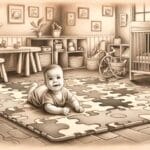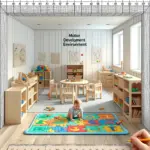A good motor environment requires a dedicated area of your home for your infant motor development. The ideal floor will be neither too hard nor too soft. Do not use a blanket because it will move at the same time as your baby’s arms, preventing him from moving. You can use a puzzle type mat to provide an environment that is neither too hard nor too soft. This type of mat will be rigid enough not to move at the same time as your baby. Enhance your infant’s motor development with a dedicated space in your home, designed to support their crucial early movements and foster growth in a safe environment. Baby’s physical development is greatly influenced by the environment we provide, enabling them to reach milestones in strength and coordination.
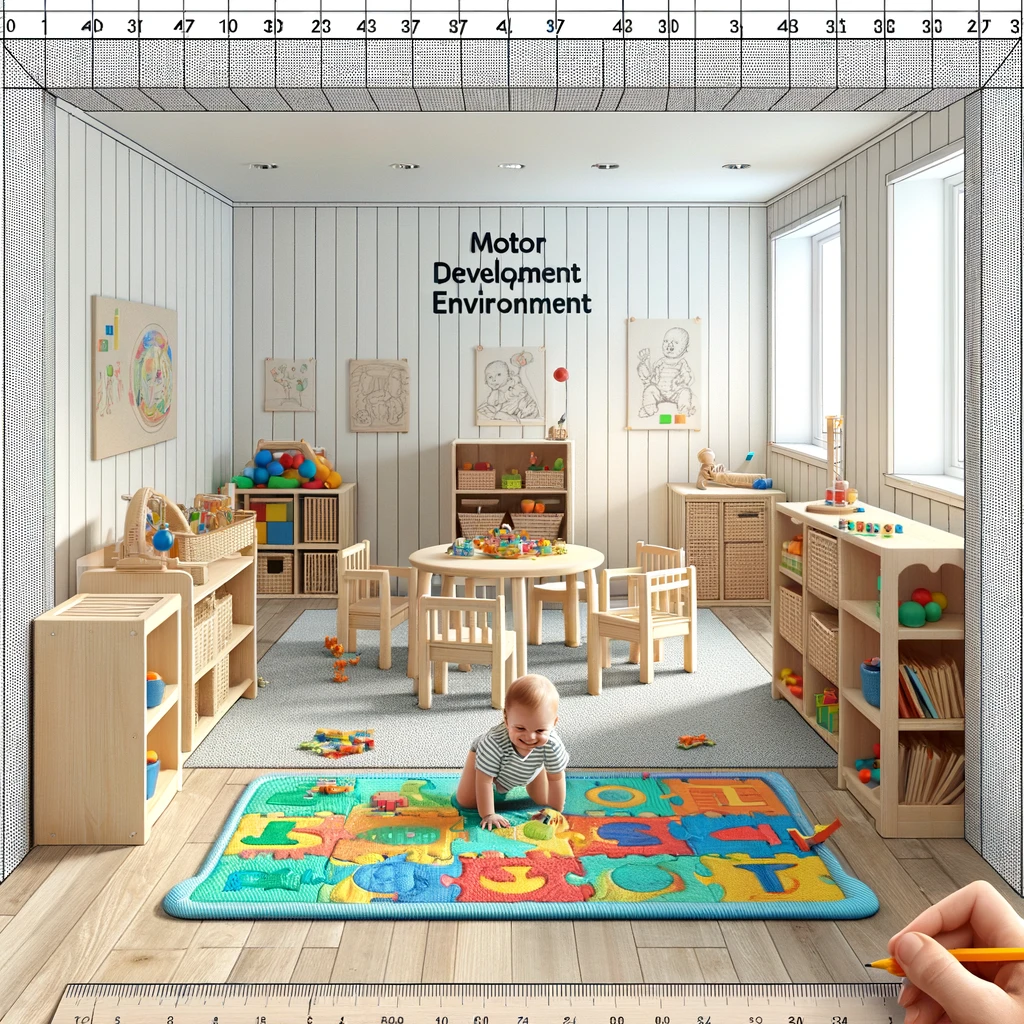
The Blueprint for Motor Skill Mastery:
1. Designing the Perfect Exploration Zone for infant motor development :
A baby’s motor development area should be a sanctuary of discovery, not confined by the traditional bounds of a playpen. The ideal surface is neither too hard, which could discourage those tentative first movements, nor too soft, where limbs sink and deter mobility. The ideal floor for a baby: somewhere between a marshmallow and a rock. Puzzle mats emerge as the champion in this scenario, offering the perfect balance of firmness and forgiveness, ensuring that the mat stays in place as your baby ventures across its expanse. Regular engagement in a well-designed infant motor development space can significantly enhance a baby’s physical progress and confidence.
2. Safety as the Cornerstone:
In this dedicated space, every detail matters, especially when it comes to safety. It’s imperative to maintain a vigilant eye, but the environment itself should be a proactive protector. This means no small, ingestible objects within reach and securing furniture corners with soft bumpers to prevent any unwanted bumps or bruises during those inevitable wobbly moments.
3. Thermal Comfort for Unhindered Exploration:
A baby dressed too warmly is a baby constrained. The ambient temperature of the room should be such that light clothing suffices, allowing for free movement and reducing the risk of overheating or discomfort.
4. Visual Stimulation for the Young Explorer:
Birth 5 – 6 months: High contrast images can provide an easy visual aid for your baby to see. The visual areas being immature at this age it is difficult for a baby of this age to observe a classic environment. You can present images with high contrast to make it easier to see. High contrast images for babies: because who doesn’t love staring at modern art?
5. Furnishing for Autonomy - Early motor skills :
A child’s room should be a realm where everything is within their grasp. Low-lying storage and furniture encourage independence and ensure that your child’s environment grows with them, fostering a sense of ownership and responsibility over their space and belongings. An optimal environment for infant motor development is free from clutter, allowing ample room for babies to practice rolling, sitting, and eventually crawling.
Child Development Devices: Separating Help from Hype
A Big No to Walkers! Walkers are arguably the least suitable device for learning to walk. Far from teaching infants how to walk, these devices can do more harm than good. When considering toys and accessories, select items that promote infant motor development, encouraging grasping, reaching, and crawling.
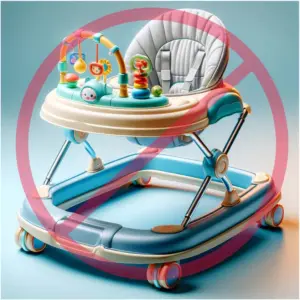
Negative Effects of Using Walkers:
- Lack of Protective Skills: Infants in walkers don’t learn how to protect themselves. The false sense of security provided by the device teaches them that missteps don’t lead to harm. Consequently, a child who has become accustomed to a walker is more likely to get injured once the device is removed.
- Walker-Related Accidents: Every year, incidents involving walkers occur, including falls down stairs and other accidents.
- Balance Development: The use of a walker does not teach infants balance. Instead, it hinders their natural ability to learn equilibrium and body coordination.
It’s advisable not to purchase a walker at all. If you already own one, consider getting rid of it for the sake of your child’s natural and safer motor development.
Why You Shouldn't Force the Sitting Position
Some seats are sold as facilitating the acquisition of the sitting position. You should not force your child to remain seated in a seat that locks them in this position. A baby who knows how to sit will stay in this position for a few seconds and then move away. If you seat your child even without a device when they are not ready, then since they do not know how to sit, they will remain stuck in that position for a long time. The brain develops through its use and in movement.
Obviously you can use this type of seat for meals, but do not deliberately force your child to sit in order to teach him this position.
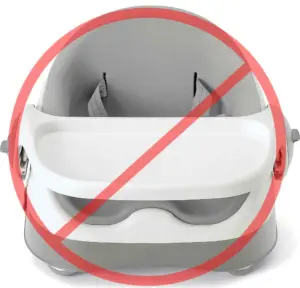

The playpen and the swing are devices that you can use but in moderation. So be careful, these are devices that greatly restrict movement. The swing can help a little with the acquisition of balance but the baby is very constrained in his movements in this device so be careful in moderation. The playpen is a useful device for you yourself and not for your baby! If you want to use a playpen it will be better to use it very young when your baby will not be able to move around. As soon as your child is able to crawl then the playpen will become really restrictive in terms of mobility… it is at this point that you will have to abandon it…
Do you want to delve deeper into your child’s motor development? Visit our post on motor development.
For those seeking further insights into the pioneering work of Emmi Pikler, the Hungarian pediatrician renowned for her contributions to the motor development of young children, an additional resource worth exploring is the dedicated website.
The good motor development of your child requires above all a good organization of his environment and his day. Some devices are sold for commercial reasons, to respond to market logic even if the manufacturers know that these devices in no way constitute motor development. The walker does not actually teach your child to walk at all. The only reason for its existence is commercial! Early childhood mobility begins with simple reflexes and evolves into complex movements, all within the first few years of life.

